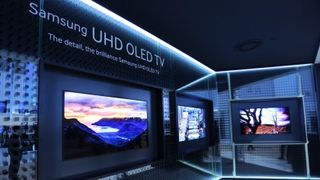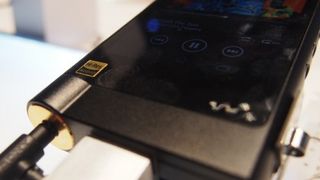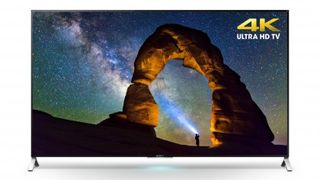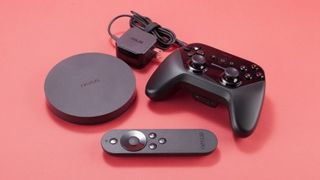Whether the content is there to support it or not - and trust me, it's not - 4K will become a more standard choice when buying a TV in 2015.

This is due, in part, to consumer demand. The Consumer Electronics Association (CEA) reports that panel manufacturers collectively sold a whopping 800,000 UHD TVs in 2014 in the US alone. This represents a 500% increase over the number of 4K TVs sold in 2013.
What does the CEA expect this year? It expects consumers to buy three million 4K TVs in 2015.
Up until now though, UHD has been a relatively lawless place, with manufacturers posting their own double-speak in order to get the leg up on the competition.
The UHD Alliance, a collective of the biggest names in the industry (Sony, Samsung, Panasonic, Sharp, Netflix, DirecTV, Disney and Fox, to name a few…) have come together to create a strict set of standards that everyone will have to follow.
Whether or not the UHDA will stop corporate trickery remains to be seen, but we're cautiously optimistic this ocular Justice League can clear up a bit of the confusion around 4K in 2015.

What's happening in audio?
There have been hundreds of thousands of dollars sunk into advertisements that convince you that you need a new TV, monitor or graphics card. For years you've been told by every corner of the tech sector that visual fidelity is more important than your audio setup.
Get daily insight, inspiration and deals in your inbox
Get the hottest deals available in your inbox plus news, reviews, opinion, analysis and more from the TechRadar team.
But that's going to change in 2015. Two established companies, LG and Sony, are willing to go all-in on audio this year.
Sony has always been a major player in audio, but this year's release of the new Hi-Res Walkman has the potential to put high-end audio in our pockets without ever touching a conversion program. The Walkman ZX2 takes MP3s and MP4s from your music library and upconverts them to "near hi-res quality," and has the ability to store and play most lossless media files like flac and wav.
High-end audio won't come cheap, though. Sony's audiophile-quality iPod competitor will cost upwards of $1,200 here in the US and £949 in the UK.
But while Sony's targeting the high-end of the audio spectrum, LG's attempting to dethrone Sonos as the king of multi-room home audio.

The system, called LG MusicFlow, uses any LG MusicFlow speaker like a node in a Wi-Fi network. You can connect to any number of speakers (from soundbars to surround sound systems, portable Bluetooth speakers to bookshelves) to your network and control them individually or together through the MusicFlow app.
We'll have a full review of the system when LG drops the needle on MusicFlow in March.
What's happening in streaming?
4K content was hard to come by in 2014. Netflix had one or two original series that supported high-resolution streaming as well as one or two high-profile films like Crouching Tiger, Hidden Dragon. But, by and large, there was little to no native 4K content to watch on any of those 800,000 4K TVs sold last year.
It'd be easy to give you a blanket statement like "there'll be more places to watch 4K in 2015." But we're numbers people. Just how much more content will we see? How much of it will sit behind a paywall? And when will cable providers get it together to broadcast at least the most basic cable channels in 4K? No really, someone tell me.

I don't have all the answers, and I'm not going to pretend I do. What I can say with confidence is that there were some game-changing events that happened in late 2014 that set the stage for a surge of native 4K content.
The biggest of these events was Amazon launching a slew of 4K content with the intent to challenge Netflix's high-resolution monopoly. Currently, there are 33 movies available in Ultra-HD, only about a fifth of which are available for free to Prime subscribers on Amazon Instant Video. Be sure to catch Amazon's original series like Transparent, Alpha House and Mozart in the Jungle, also available in 4K.
If you're still tied to cable, the fact that DirecTV launched a 4K satellite in December and Comcast started its own streaming app before the clock struck January 1 bodes very well.
What's coming next?
That's 2015 in a nutshell - 4K TVs will go vogue, music will finally get the kind of attention TVs had for the past 10 years and yes, there will finally be native 4K content to fawn over.
Before we wrap up this look into the crystal ball though, I'd like to take you a bit further. What can/should/needs to happen in the realm of hi-fi and home entertainment?
It's likely that Apple and Google will get into 4K this year by adding a selection of Ultra-HD films to their respective storefronts. And if both services get an upgrade that means the next iteration of the platforms' staple media players, the Apple TV and Nexus Player, won't be far behind.

So what will happen with all the standard HD TVs? While 1080p screens aren't out of the picture yet, industry analysts as well as big manufacturers like LG see them phasing out in 2018 before completely disappearing in 2020.
Similarly, audio's only going to get better and better from here on out. The iPod gave us the ability to fit thousands of songs on a 16GB device and in the time since then, memory's only gotten cheaper. We've finally reached a point where 256GB could easily fit 25,000 of your favorite songs in hi-res. And that will only happen if convenient hi-fi streaming services like Tidal and Spotify don't succeed in convincing us to stop owning music entirely.
Whether you're an A/V nut, a home entertainment enthusiast or just someone with a streaming addiction, the future for your favorite technology looks bright.
Nick Pino is Managing Editor, TV and AV for TechRadar's sister site, Tom's Guide. Previously, he was the Senior Editor of Home Entertainment at TechRadar, covering TVs, headphones, speakers, video games, VR and streaming devices. He's also written for GamesRadar+, Official Xbox Magazine, PC Gamer and other outlets over the last decade, and he has a degree in computer science he's not using if anyone wants it.

